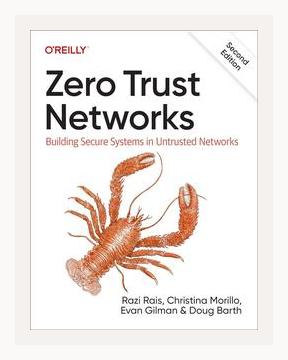Technology and Digital TransformationCybersecurity
Introduction
“Zero Trust Networks: Building Secure Systems in Untrusted Networks” is a seminal book by Evan Gilman and Doug Barth, published in 2017, that aims to reshape traditional concepts of cybersecurity. It introduces the principles of Zero Trust (ZT) architecture, a framework that denies inherent trust within corporate network boundaries and emphasizes continuous verification of every action and request.
Key Concepts
- Zero Trust Model Fundamentals
- Principle of Least Privilege: Only grant access permissions necessary for tasks.
Action: Regularly review user permissions and adjust based on current role requirements. - Micro-segmentation: Divide networks into smaller zones to isolate workloads.
Action: Deploy network policies that can segment traffic by application or user role. -
Continuous Authentication: Repeatedly verify user identity rather than relying on one-time verification.
Action: Implement multi-factor authentication (MFA) throughout system access points. -
Historical Context and Need for Zero Trust
- Traditional perimeter-based security models—built to assume everything within the network is trusted—are vulnerable in modern, diverse, and connected environments. This was exemplified by multiple high-profile breaches where attackers moved laterally with ease once inside.
- Action: Decommission trust-based networks and start integrating internal protections against “lateral movement.”
Detailed Breakdown of Zero Trust Practices
- Securing the Network
- Emphasize on encryption for data in transit.
Example: Use of Transport Layer Security (TLS) for all internal communications.
Action: Configure TLS for internal services communication by default. -
Introducing strong APIs and service-level communications with robust validation checks.
Action: Enforce API gateways to validate and manage internal API calls. -
Identity and Access Management
-
Single Identity Principle: Rely on a single source of authentication to simplify tracking and controls.
Example: Integrating systems with a central identity provider like Active Directory or using services like OAuth.
Action: Consolidate authentication services under a single identity provider. -
Policy Creation and Enforcement
- Tailor security policies to be adaptive rather than static.
Example: Facebook’s use of dynamic policy enforcement where rules adapt based on behavior analytics.
Action: Use tools like machine learning for deriving policies that adapt dynamically to threat patterns.
Case Studies and Practical Implementations
- Google’s BeyondCorp
- A real-life implementation of Zero Trust by Google, BeyondCorp replaces the perimeter security model by verifying every request via robust identity and context.
-
Action: Adopt user and device context information in access decisions, similar to BeyondCorp.
-
Cloud-Based Microservices
- Example: Netflix employs Zero Trust principles to manage its microservice architecture. Each service’s request must be authenticated and authorized regardless of origin.
- Action: Implement service mesh patterns to manage microservice communications, ensuring mutual TLS and in-depth service identity checks.
Addressing Insider Threats
- Behavior Analysis
- Use advanced analytics to detect abnormal behaviors indicative of insider threats.
-
Action: Implement User and Entity Behavior Analytics (UEBA) tools to identify and mitigate insider threats based on deviation from normative behavior.
-
Audit Trails
- Maintain comprehensive logs of all access and actions to ensure accountability and enable forensic investigations.
Example: Twitter’s internal system uses immutable audit logs that cannot be altered. - Action: Deploy logging infrastructure like a Security Information and Event Management (SIEM) system to facilitate this.
Adopting Zero Trust in Legacy Systems
- Incremental Changes
- Start with critical systems and high-value assets when transitioning to Zero Trust.
-
Action: Create a prioritized list of assets and systematically incorporate Zero Trust layers starting from the top.
-
Compatibility Layers
- Utilize intermediaries such as proxy servers to bridge old systems with new Zero Trust principles.
- Example: Using API gateways or security brokers that can wrap legacy systems in modern security protocols.
- Action: Deploy middle-layer services that can enforce Zero Trust policies over legacy systems.
Key Zero Trust Tools and Technologies
-
Identity Providers: Central identity management to streamline and secure user access.
Action: Integrate systems with robust identity platforms like Okta or Azure AD. -
Access Gateways: Controlled gateways for ensuring policies are enforced at the entry point.
Example: AWS API Gateway for controlling access to microservices.
Action: Use and correctly configure API gateways to manage data input/output securely. -
Network Access Control (NAC): To enforce policies dynamically on devices based on compliance status.
Example: Cisco ISE which dynamically adjusts network access based on device compliance.
Action: Deploy NAC solutions and make compliance checks part of your continuous monitoring strategy.
Planning and Implementing Zero Trust
- Assessment Phase
-
An organization must first analyze its current state, identifying potential weaknesses in the existing security model.
Action: Conduct comprehensive security audits and vulnerability assessments. -
Design Phase
-
Define the architecture, incorporating Zero Trust components such as reliable identity verification, strict access controls, and data encryption.
Action: Develop a blueprint for restructuring your network towards Zero Trust, focusing on key integrations and policy definitions. -
Implementation Phase
-
Gradually shift from traditional security to Zero Trust, ensuring that critical systems are transitioned first.
Action: Physically implement and test Zero Trust policies in progressively broader scope. -
Monitoring and Response
- Continual watching and tweaking of policies. Adaptive response strategies to any detected anomalies or threats.
Action: Establish a Security Operations Center (SOC) to manage and respond to threats based on Zero Trust principles consistently.
Conclusion
“Zero Trust Networks” by Gilman and Barth provides comprehensive guidance on restructuring organizational security. By emphasizing continuous authentication, micro-segmentation, and strict access controls, it helps mitigate modern security threats effectively. Real-world examples illustrate practical applications, while detailed steps furnish readers with actionable strategies to implement Zero Trust within their environments. This book is an invaluable resource for IT and security professionals aiming to future-proof their network defenses against evolving cyber threats.
